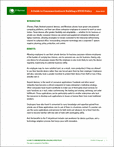 | iPhones, iPads, Android-powered devices, and Windows phones have grown into powerful computing platforms, and their use allows enterprise employees to connect to work as never before. These devices offer greater flexibility and adaptability -- whether it's for business or private use. But these devices also put proprietary company information at risk. Ideally, consumer devices can extend and supplement desktop and laptop machines, allowing employees to remain connected to the organization without being chained to a physical office. Incorporating consumer technology into a corporate IT system requires planning, policy, protection, and control. Read this guide now to find out the 5 best practices for BYOD as well as see what your company might be missing from the checklist. Request Free! |
